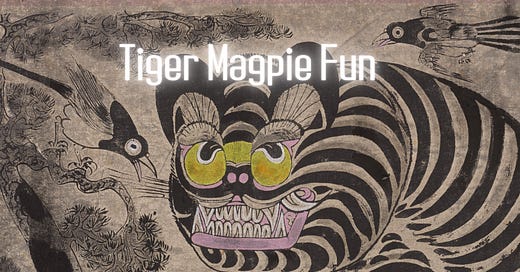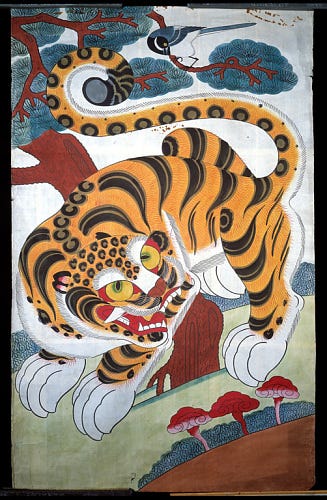Dear word explorer,
First off: a giveaway! In a recent newsletter I mentioned that Jennifer Wilde: Unlikely Revolutionaries, the point-and-click video game I wrote for Outsider Games based on the comic book I wrote for Atomic Diner Comics, is going to be available to play on the Nintendo Switch on 27 March, 2025!
Here’s the blurb:
In 1921, young French artist Jennifer Chevalier becomes embroiled in death, espionage and revolution, assisted by the ghost of Oscar Wilde. A hand-drawn Point & Click adventure with a unique comic book inventory design.
Stephen Downey, the artist on the original comic and the CEO/Founder of Outsider Games has given me four codes for the game so it can be played for free. I’ve two codes for the USA and two for Europe.
I’m giving my paid subscribers priority! I’m reserving three codes for my patrons, and one for my regular subscribers (please note: this is open to registered subscribers). If you’d like to win one simply reply to this email, or leave a comment, and please state what territory you’re in (apologies for those outside of these regions).
It might be the case that all three will be snapped up immediately, or perhaps I’ll have two codes for my general audience. For either section of my audience, it’s first-come, first-served. Once I run out of codes that’s all there is!
Here’s the trailer for the game for those who are unacquainted with it.
I don’t own a Switch, so these codes are no good to me, and I’m happy to spread the fun among my readers.
On that note, since I’m tech adherent and a gamer, the Switch 2 is looking pretty tempting as a hand-held console. A full reveal of the hardware specifications and proper play testing will occur on the 2nd of April. There’s a joke among gamers about the ‘Hype-Train’ that is built up in advance of any release of this magnitude. I’m always amused by ‘leaks’ of information that spawn litters of online articles, most of which seem to repeat a common set of bullet points — as if they were copy and pasted from a PR release! Or spat out from an AI bot.
The Switch 2 Hype-Train has departed the station and is gaining speed along the tracks. No doubt there will be outrageous speculation and people loving and hating the untested device long before it becomes available for sale (in June 2025).1 I see the same behaviour when trailers for a new movie appears, especially if it is part of a beloved franchise. Videos are uploaded within minutes with viewer reactions picking apart every detail, praising or condemning the unseen film.
Trailers are designed to sell a film, and may contain footage that won’t appear in the final cut. The best you can say is: that makes me want to see the film, and cross your fingers that the result is enjoyable! I’ve seen trailers make a dreadful flick look promising, and woeful trailers undersell a work of excellence.
I’m also aware of the passion that a favourite game/show/movie can elicit in people. It’s a beautiful to witness people enthusiastic about art. It gets wearisome when the conversation turns jaded or furious. These days my rule is simple: I don’t discuss bad art.2 I aim to elevate work that inspires me.
A few months back I was agitated about a TV series that confounded me with its lack of coherent storytelling and erratic character development. I came close to breaking my rule and unloading both barrels of outrage upon my audience. When discussing it in person it was difficult not to get into an active state of irritation.
This is why the ability to respond instantly on social media platforms is so harmful to humans — when we’re emotionally upset we have a diminishing ability to be rational, and this is deeply coded in the human brain.
Daniel Goleman, PhD, the author of Emotional Intelligence (1992), puts this in simple terms in this 2004 interview:
The emotional brain responds to an event more quickly than the thinking brain. The amygdala in the emotional center sees and hears everything that occurs to us instantaneously and is the trigger point for the fight or flight response. It is the most primitive survival response. If it perceives an emotional emergency, it can take over the rest of the brain before the neo-cortex (the thinking brain) has had time to analyze the signals coming in and decide what to do. That takes a long time in brain time. The amygdala in the meantime has decided, Oh no, I've got to do something! It can hijack the rest of the brain if it thinks there is an emergency, and it is designed to be a hair trigger. In other words, better safe than sorry. This has helped immensely in evolution as a survival mechanism, when you are answering the question: Does it eat me or do I eat it? You can't sit around and think about it; you need to have an instantaneous response. That's how our ancestors survived.
When we’re infuriated (or fearful) our brain assumes there’s a threat in the environs — otherwise why would we be so worked up? Logical analysis is derailed. You know what’s not helpful if there’s a giant tiger sniffing about? Pondering if it’s a Bengal or a Siberian tiger, and wondering why one turned up in Ireland!
Which brings me to Korea, where tigers used to be commonplace in pre-industrial periods.
Humans have always been in awe and fear of the tiger, a massive, majestic predator. Across Asia it has been venerated as a symbol of power and authority. In several territories the classic iconography of the four cardinal directions puts the White Tiger in the West, along with the Azure Dragon in the East, the Vermillion Bird in the South and the Black Turtle in the North.
In Korea there is a tradition of folk paintings for ordinary people, known as Minhwa. This was separate from the style of artwork favoured by the upper classes, which had its own set of rules and themes. Minhwa paintings depicted animals and flowers in colourful and bold strokes. Their placement in the house could be significant. An image of a dog by the doorway could deter thieves, for example.
One genre of Minhwa is Hojak-do: ‘ho’ (tiger), ‘jak’ (magpie), and ‘do’ (painting).
The fierce tiger could block or expel evil spirits and the clever magpie encouraged good fortune. Together, the duo were an auspicious talisman for the home.
Over time, the two creatures took on a political dimension, with the tiger caricatured as a buffoon, representing the aristocracy, while the intelligent magpie expressed the ordinary people. Villagers could decorate their homes with this pair and quietly resist the ruling class.
While reading up on this combination I came across versions of a folk story about the tiger and the magpie:
One hot day the tiger was stalking through the forest and spotted a swampy puddle. He decided it was the perfect mud bath in which to cool down. Alas, he was sucked into the muck and could not get out. Each attempt to escape worsened his dilemma. Days passed, and his hunger and desperation increased. He cried out plaintively for help.
A passing woodsman heard the tiger’s complaints, and the tiger entreated his aid. Touched by the tiger’s plight, the woodsman devised a simple rope and pulley system in order to drag the beast from the mud.
Quick as a flash, the tiger cornered the woodsman, baring his teeth in ravenous glee for this convenient meal. Hoping to find allies, the woodsman asked a nearby ox and a pine tree to weigh in on the circumstances. Surely the woodsman should be spared for his compassionate act?
Neither the ox nor the pine tree cared for humans, and after all, a tiger will always be a tiger! They suggested the tiger enjoy his snack.
The man spotted a magpie in the tree, observing the discussion, and asked for her judgement.
‘Re-enact the scenario,’ she suggested, ‘so I can make an informed opinion.’
The tiger returned to the pool, sank into the muck, and instantly realised the trick.
The woodsman nodded in thanks at the piebald bird, and departed swiftly.
The magpie cackled at the roaring tiger, and flew back to her nest.
A final piece of good news.
I’m delighted that my story, ‘The First and Future Forest’, will be included in ParSec #14, edited by Ian Whates. The cover art is by Vincent Sammy, inspired by the story, ‘The Packet’ by Neil Williamson in the magazine. My story is in the company of Paul Di Filippo, Garry Killworth, Cecile Critofari, KB Willson, and Michael Carroll. The magazine also features an interview with Nina Allan, an article by Annie Czajkowski, book reviews, and a regular column from Jared Shurin and Anne C. Perry.
The magazine will be available to buy on Friday, the 28th of March.
I didn’t plan to write ‘Tree Life’ for last week’s newsletter, it simply developed into that subject. ‘The First and Future Forest’ was written several years ago and through the vagaries of publishing schedules is leafing this week.
When you plant the seed you need to be patient.
Yes, the irony, I’m adding to this publicity.
Although, paid critiquing requires a different tact.







